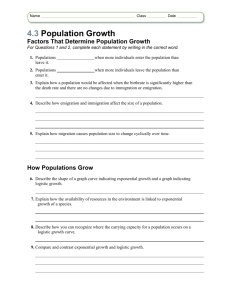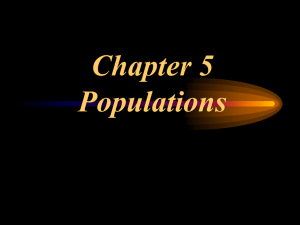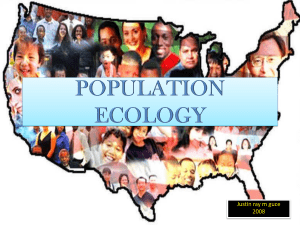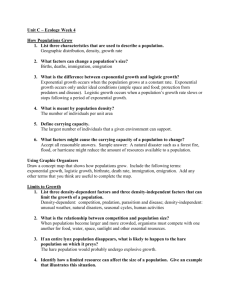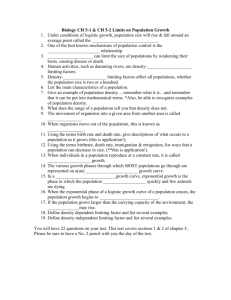5.1 worksheet - Hazelwood School District
advertisement
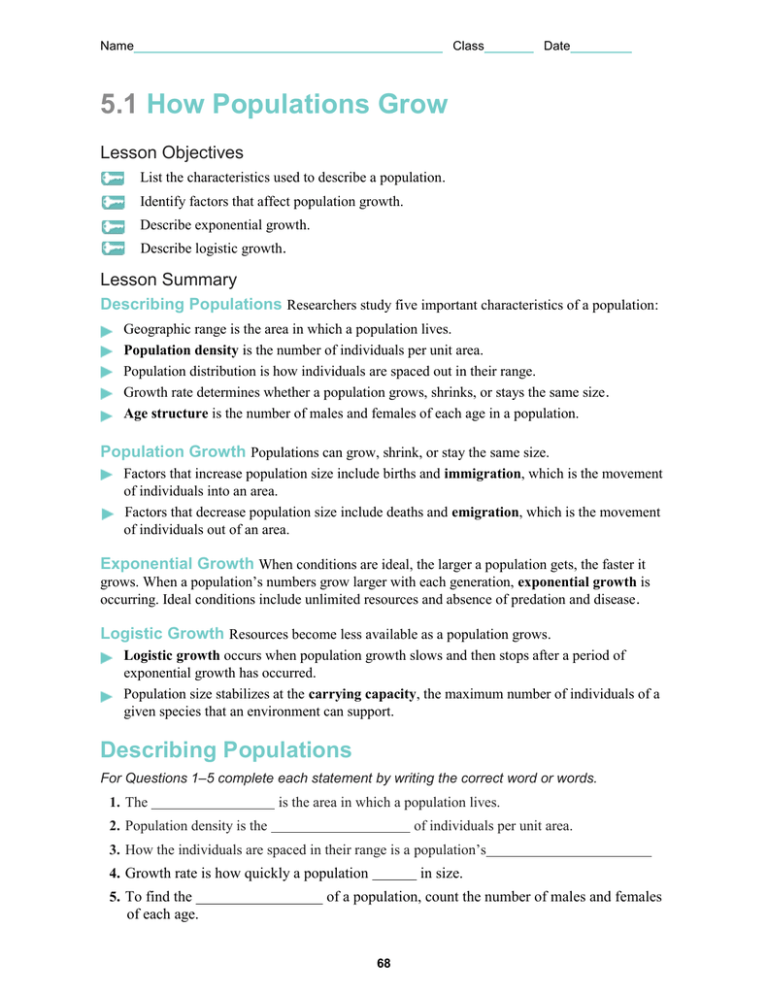
Name Class Date 5.1 How Populations Grow Lesson Objectives List the characteristics used to describe a population. Identify factors that affect population growth. Describe exponential growth. Describe logistic growth. Lesson Summary Describing Populations Researchers study five important characteristics of a population: Geographic range is the area in which a population lives. Population density is the number of individuals per unit area. Population distribution is how individuals are spaced out in their range. Growth rate determines whether a population grows, shrinks, or stays the same size . Age structure is the number of males and females of each age in a population. Population Growth Populations can grow, shrink, or stay the same size. Factors that increase population size include births and immigration, which is the movement of individuals into an area. Factors that decrease population size include deaths and emigration, which is the movement of individuals out of an area. Exponential Growth When conditions are ideal, the larger a population gets, the faster it grows. When a population’s numbers grow larger with each generation, exponential growth is occurring. Ideal conditions include unlimited resources and absence of predation and disease . Logistic Growth Resources become less available as a population grows. Logistic growth occurs when population growth slows and then stops after a period of exponential growth has occurred. Population size stabilizes at the carrying capacity, the maximum number of individuals of a given species that an environment can support. Describing Populations For Questions 1–5 complete each statement by writing the correct word or words. 1. The is the area in which a population lives. 2. Population density is the of individuals per unit area. 3. How the individuals are spaced in their range is a population’s 4. Growth rate is how quickly a population 5. To find the of each age. in size. of a population, count the number of males and females 68 Name Class Date Population Growth For Questions 6–10, write True if the statement is true. If the statement is false, change the underlined word or words to make the statement true 6. If the death rate is less than the birthrate, the population is likely to shrink. 7. Immigration increases population size. 8. Young animals may immigrate from the place where they were born to establish new territories. 9. A high birthrate and immigration decrease population size. 10. Populations grow if more individuals are born than die in a period of time. 11. THINK VISUALLY The dots in the box represent individuals in a population with a random pattern of distribution. Use arrows and dots to show what will happen to this population if emigration is greater than immigration. (Assume birthrate and death rate are equal.) On the lines below, explain your drawing. Exponential Growth 12. Describe the conditions in which exponential growth occurs. 13. Can exponential growth occur in a population of organisms that take a long time to reproduce? Why or why not? 69 Name Class Date 14. Complete the graph by drawing the characteristic shape of exponential population growth. 15. What letter is used to refer to the characteristic shape of an exponential growth curve? Logistic Growth 16. Complete the graph by drawing the characteristic shape of logistic population growth. 17. What letter is used to refer to the characteristic shape of the logistic growth curve? 70 Name Class Date 18. When real-world populations of plants and animals are analyzed, why do they most often have the logistic growth curve? 19. What does the term carrying capacity refer to? 20. Complete the table to name and explain three phases of logistic growth. Use the terms growth rate, population size, and carrying capacity in your explanations. Phases of Logistic Growth Phase Phase name Explanation 1 2 3 Apply the Big idea 21. What is an example of a limiting factor that humans use to control the carrying capacity of an environment for a particular type of organism? Explain your answer. 71

